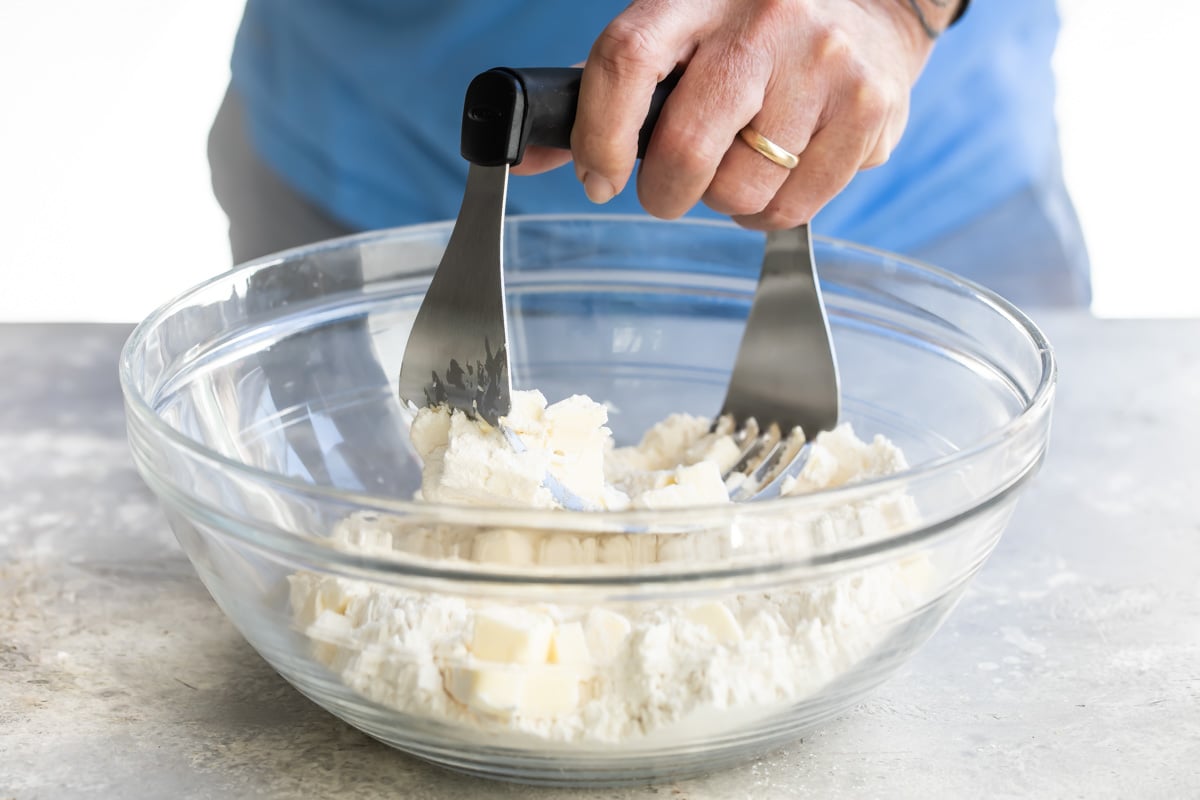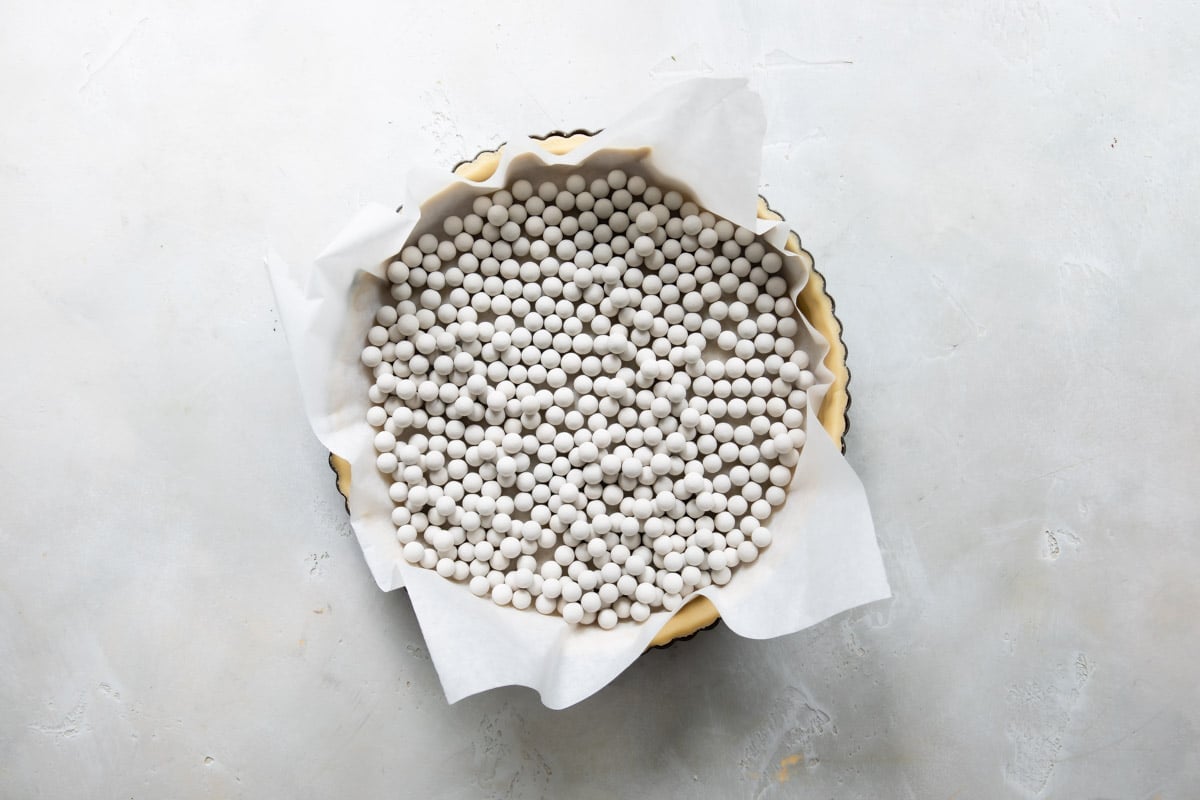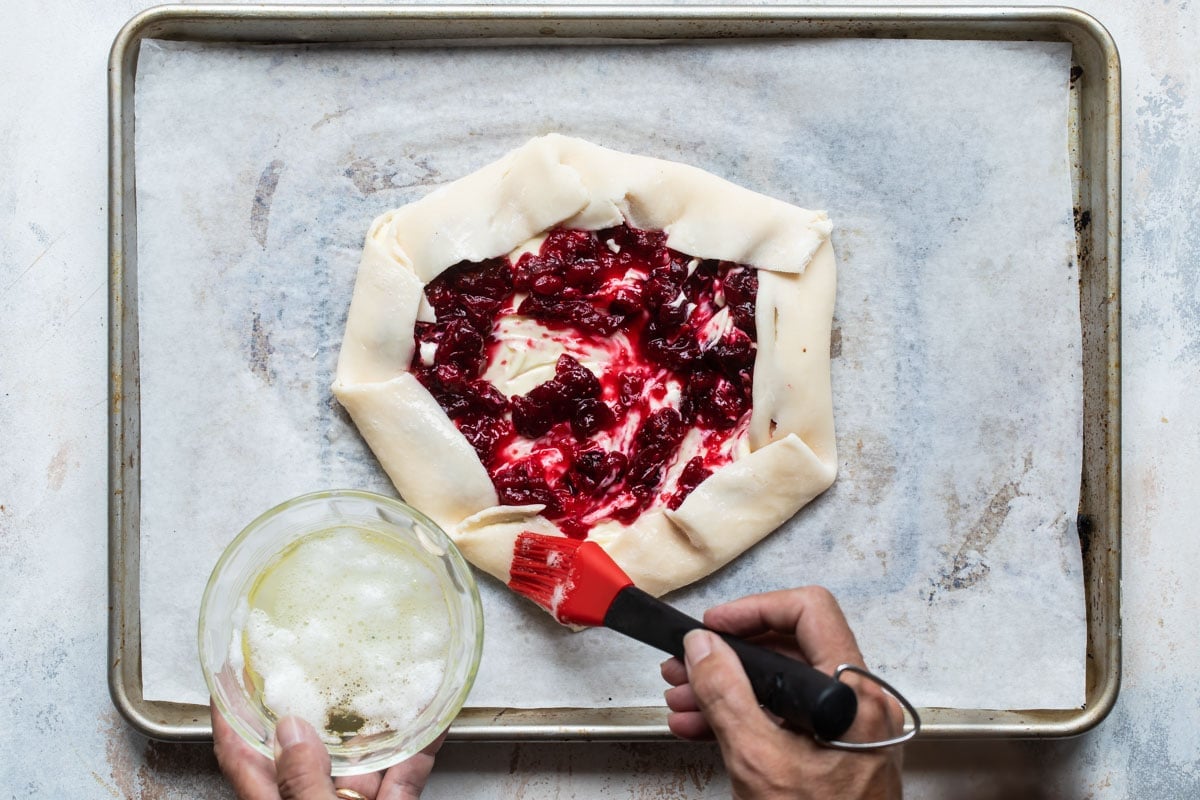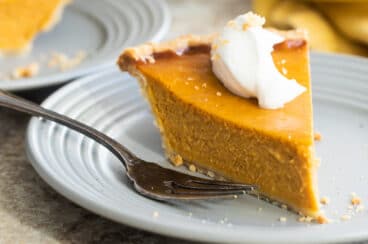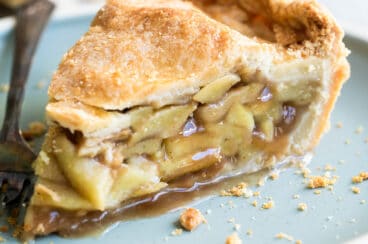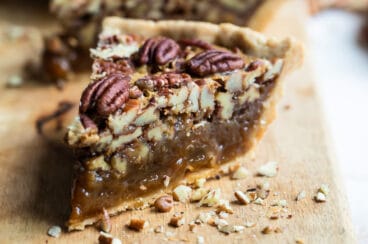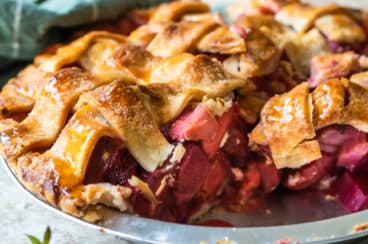This post may contain affiliate links. For more information, please see our affiliate policy.
Whether it’s the best pie at the state fair or the best pie at the potluck, it all starts with learning How to Make a Pie Crust from scratch. This recipe is for a flaky pastry dough is easier than you might think. Ready to master homemade pie crust?
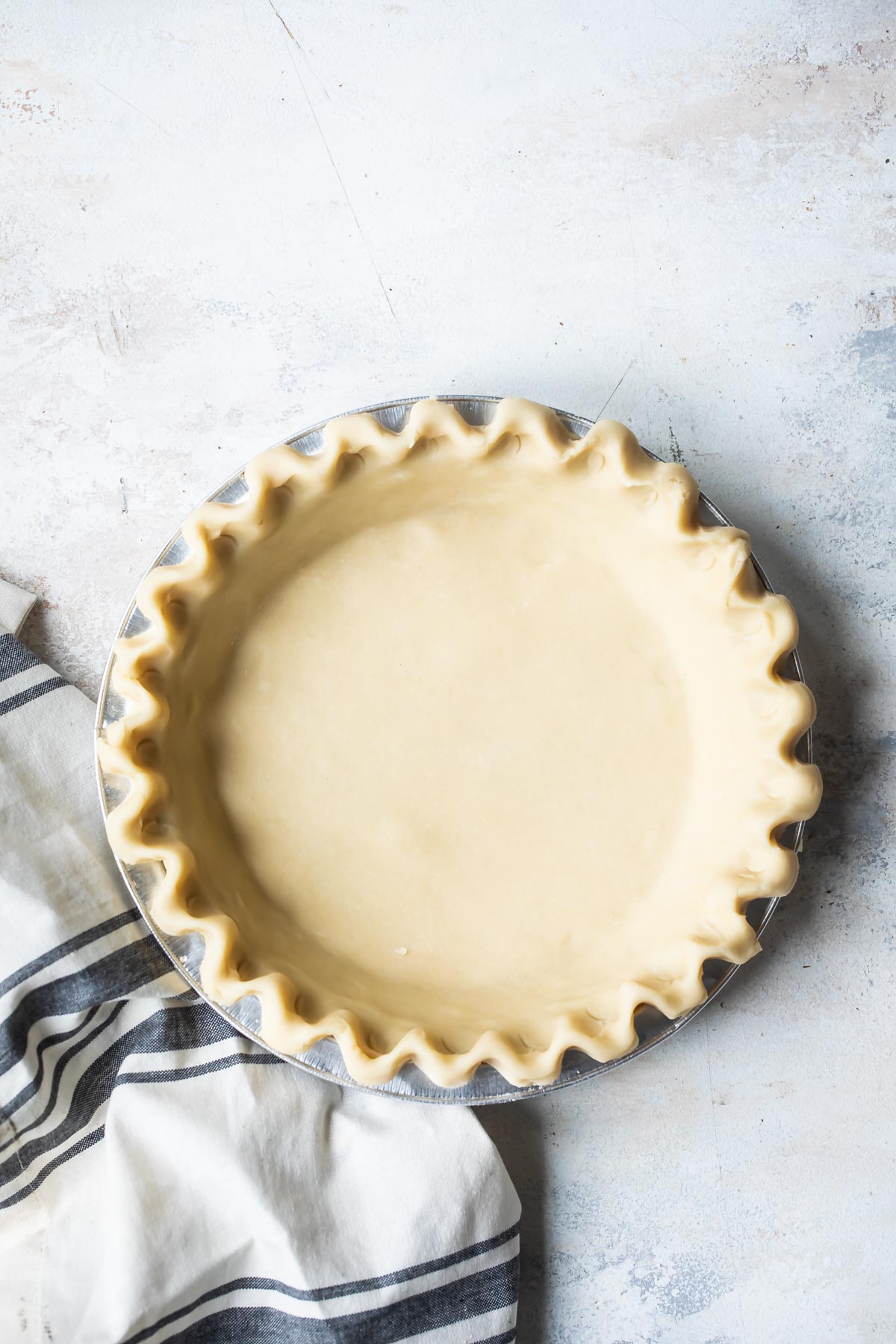
At first glance, homemade pie crust is only fat, flour, water, and a little salt. But the real sorcery happens in the process; it’s all about the details regarding how to make a pie crust that separates the ho-hum from the pie hall of fame-worthy.
Since we’ve already covered how to make tart crust and Graham Cracker Crust, I figured it was high time to explain exactly how to make the perfect pie crust (aka pastry crust) recipe. Including instructions for a double pie crust, single pie crust, and lattice-topped pie, I’m spilling all of my secrets for the best homemade pastry dough.
Once you’ve got the crust covered, it’s time to stuff it. Since this pie crust recipe from scratch calls for zero sugar, you can use it for sweet and savory purposes. Some of my favorites? Make Ahead Pumpkin Pie, Strawberry Rhubarb Pie, The Best Apple Pie, Cranberry Cheesecake Galette, Turkey Pot Pie, and Quiche Lorraine.
Table of Contents
Recipe ingredients
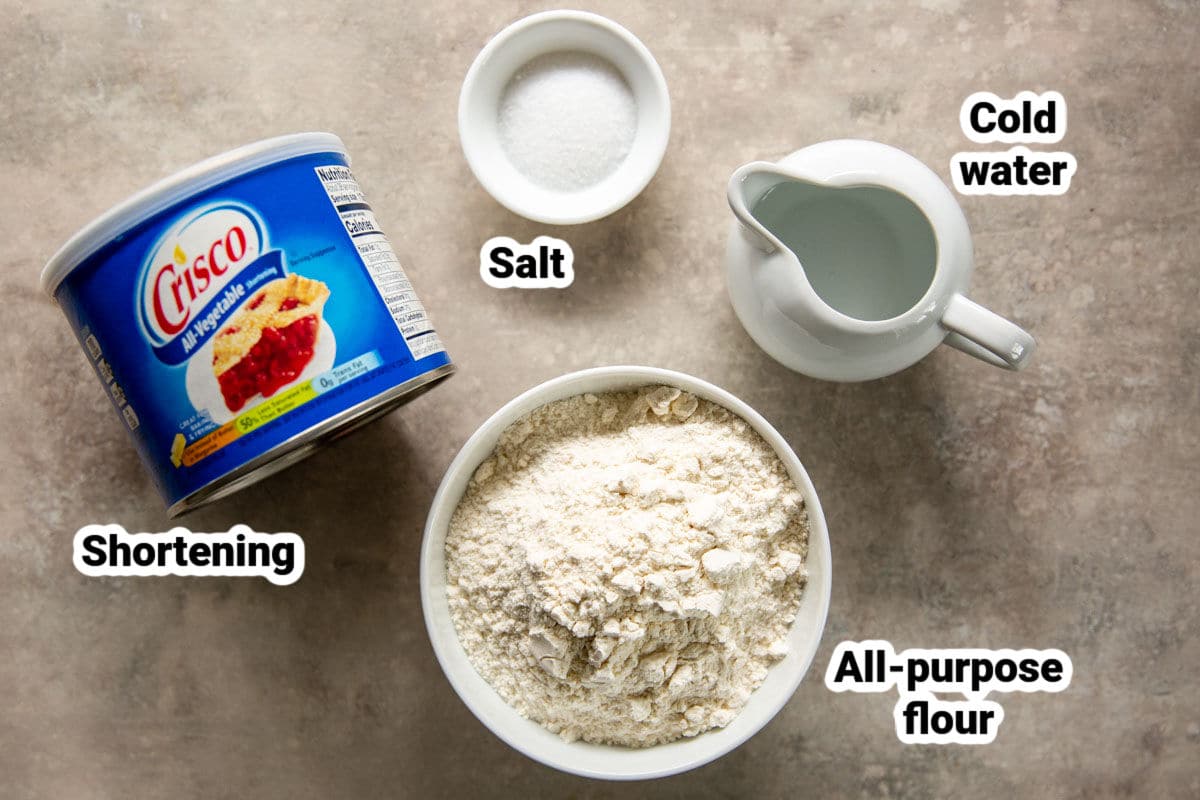
At a Glance: Here is a quick snapshot of what ingredients are in this recipe.
Please see the recipe card below for specific quantities.
Ingredient notes
- Shortening: Technically, shortening is any fat that is solid at room temperature and used in baking. Dough is considered “short” if it is more crumbly, mealy, or flaky. Historically, shortening was more a class of ingredients (lard, butter, margarine) than a specific ingredient. When vegetable shortening, such as Crisco, rose in popularity during the 1920s to 1950s as a shelf-stable alternative to butter, this became known colloquially as “shortening.” To this day, vegetable shortening makes very flaky pie crust that’s fairly easy to work with (due to its melting point that’s higher than butter).
- Cold water: Start with ice water. The colder the ingredients are, the less risk there will be for the shortening to melt or become overworked, which can lead to a tougher pie crust. Since you only need 5 to 7 tablespoons of water and use 1 tablespoon at a time, I suggest filling a liquid measuring cup with ice and water. Use a tablespoon to scoop out water, steering clear of the ice.
Step-by-step instructions
To make the pie crust:
- Preheat oven to 450 degrees. Sift the flour and salt together into the bowl of a food processor; add shortening and pulse until pieces are the size of small peas.
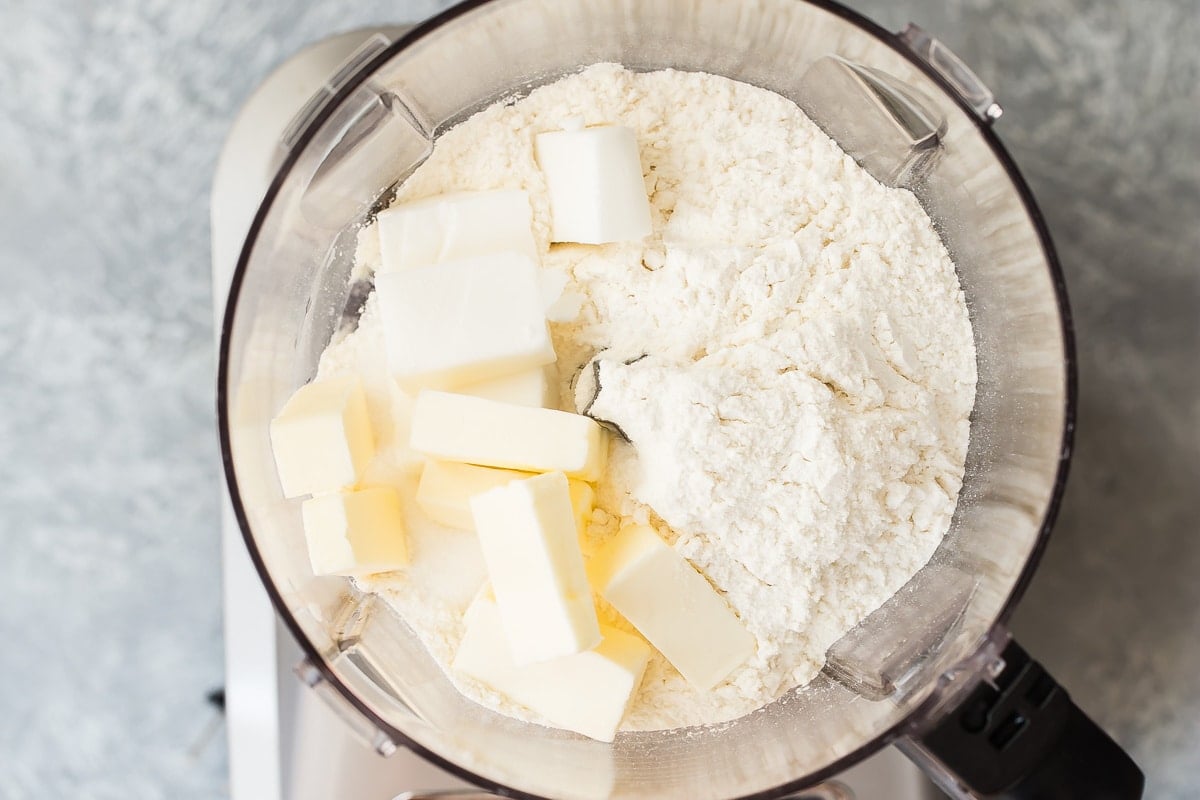
- Sprinkle 1 tablespoon of the cold water over part of the mixture. Pulse again.
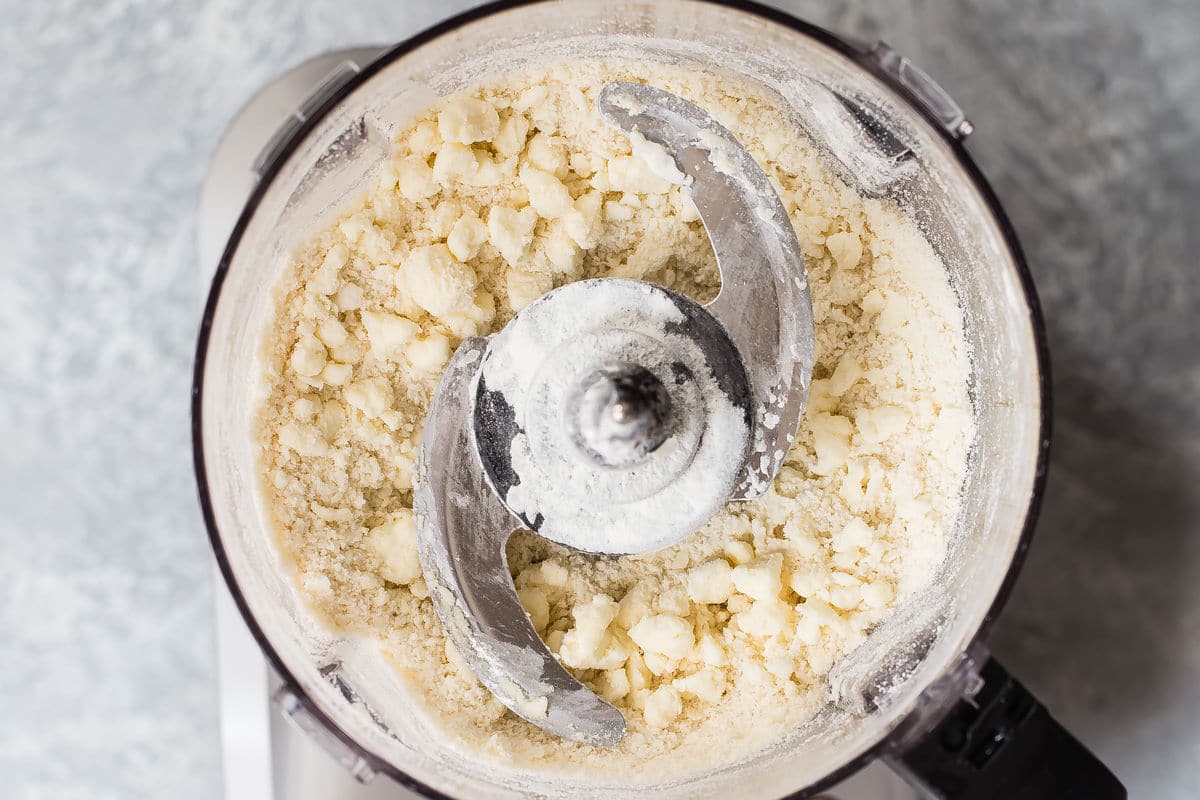
- Repeat until all the mixture is moistened and just holds together when pressed with fingertips.
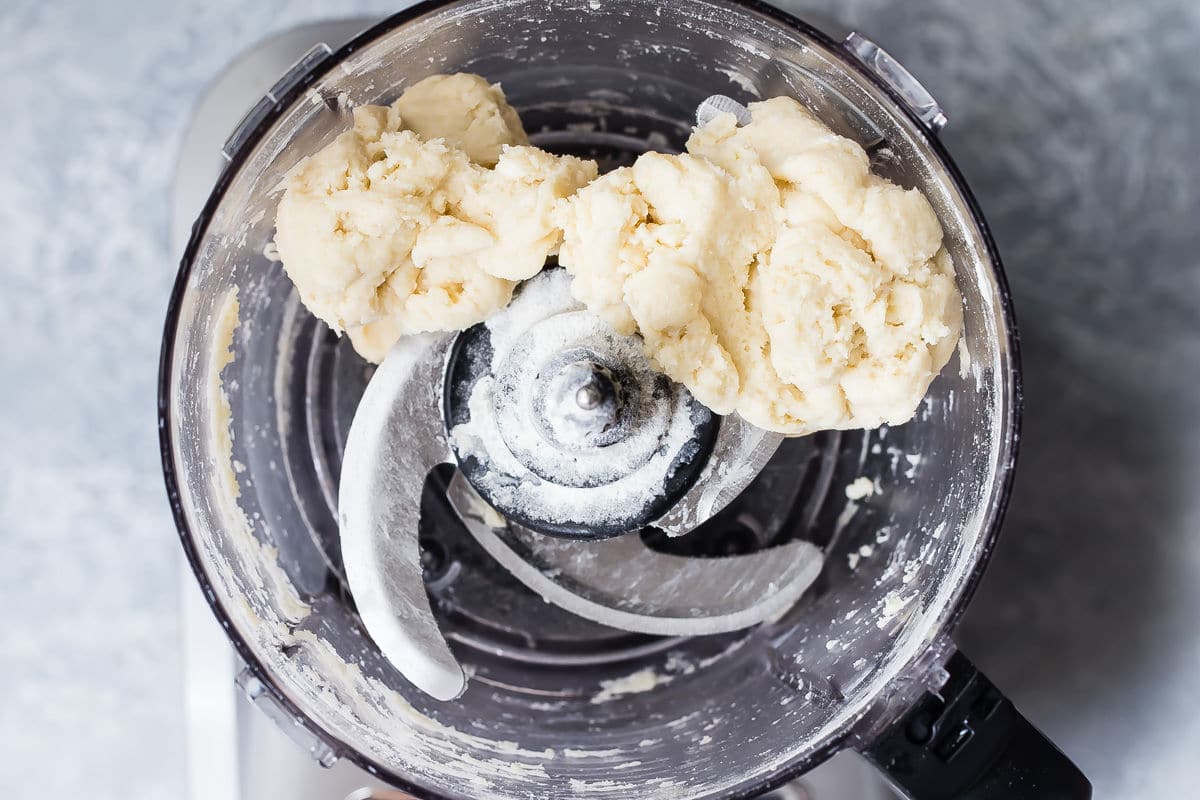
- Divide and form into two balls. Flatten one ball onto a lightly floured surface by pressing with palm of hand three times across in both directions. Roll from center to edge until 1/8-inch thick.
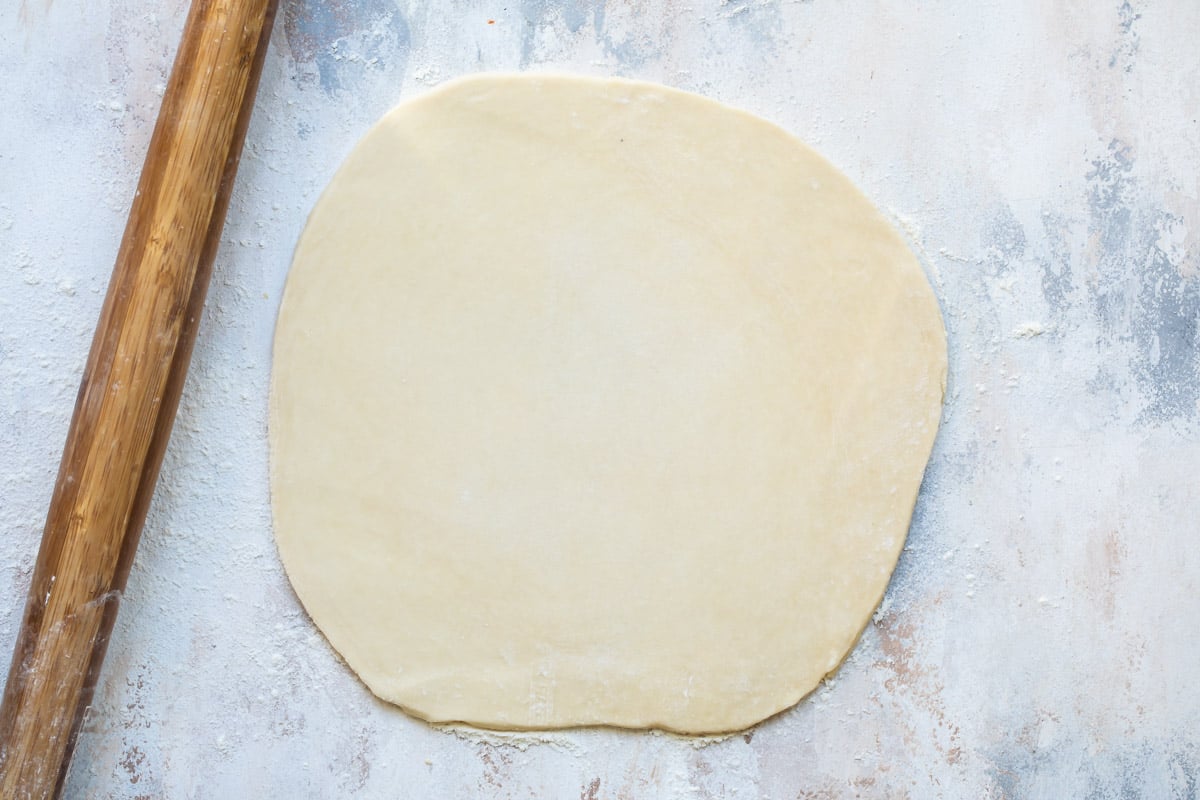
To bake a single pie crust:
- Fit pastry into 9-inch pie plate; trim ½ to 1-inch beyond edge; fold under and flute edge by pressing dough with forefinger against wedge made of a finger and thumb of the other hand.
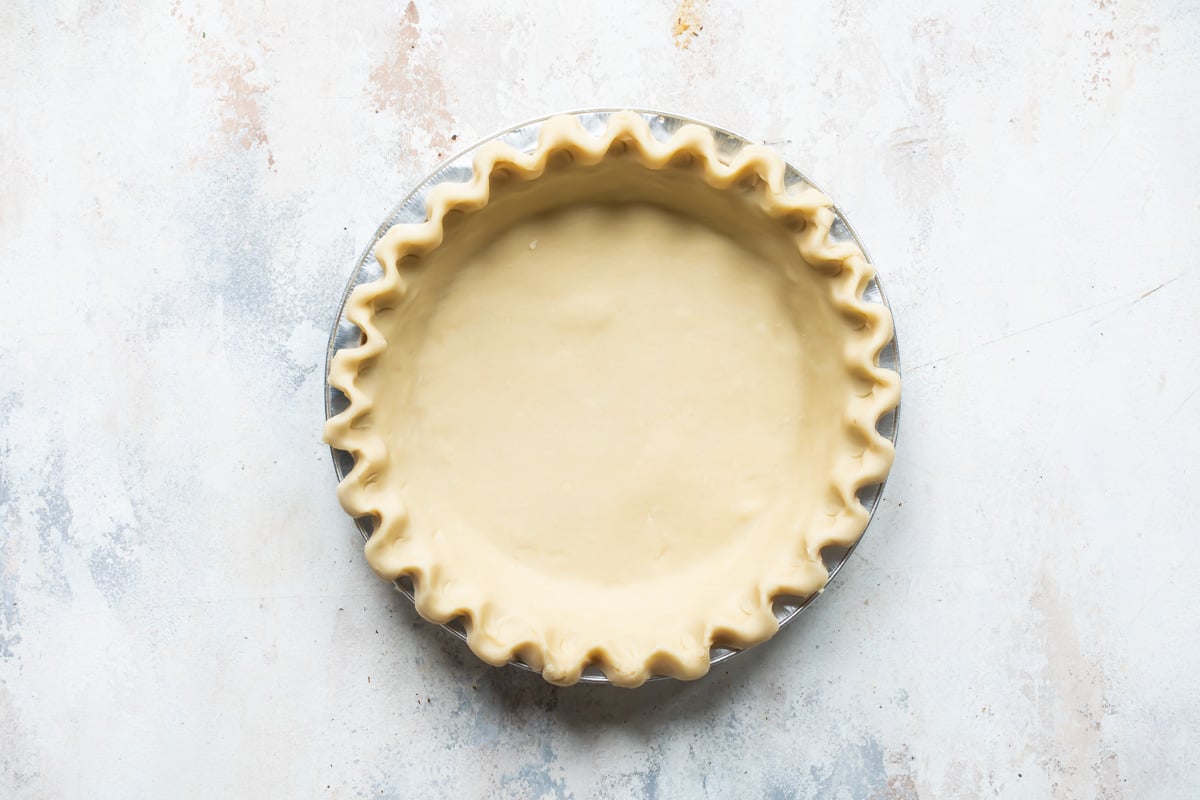
- Prick bottom and sides well with fork. (If filling and crust are baked together, do not prick crust.) Bake until golden brown, about 10 to 12 minutes.
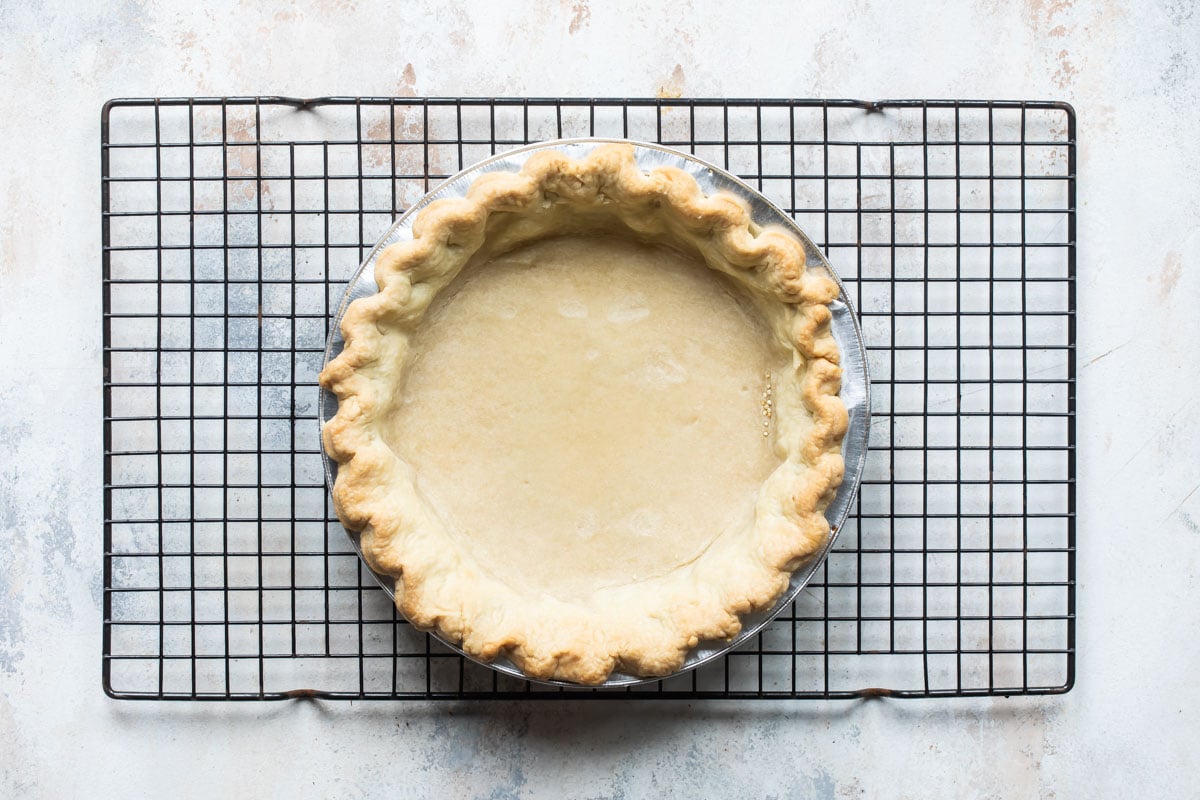
To bake a lattice-top pie crust:
- Trim bottom crust beyond edge of pie dish with a 1/2-inch overhang. Roll remaining dough 1/8-inch thick. Cut strips of pastry ½ to 3/4-inch wide with pastry wheel or knife.
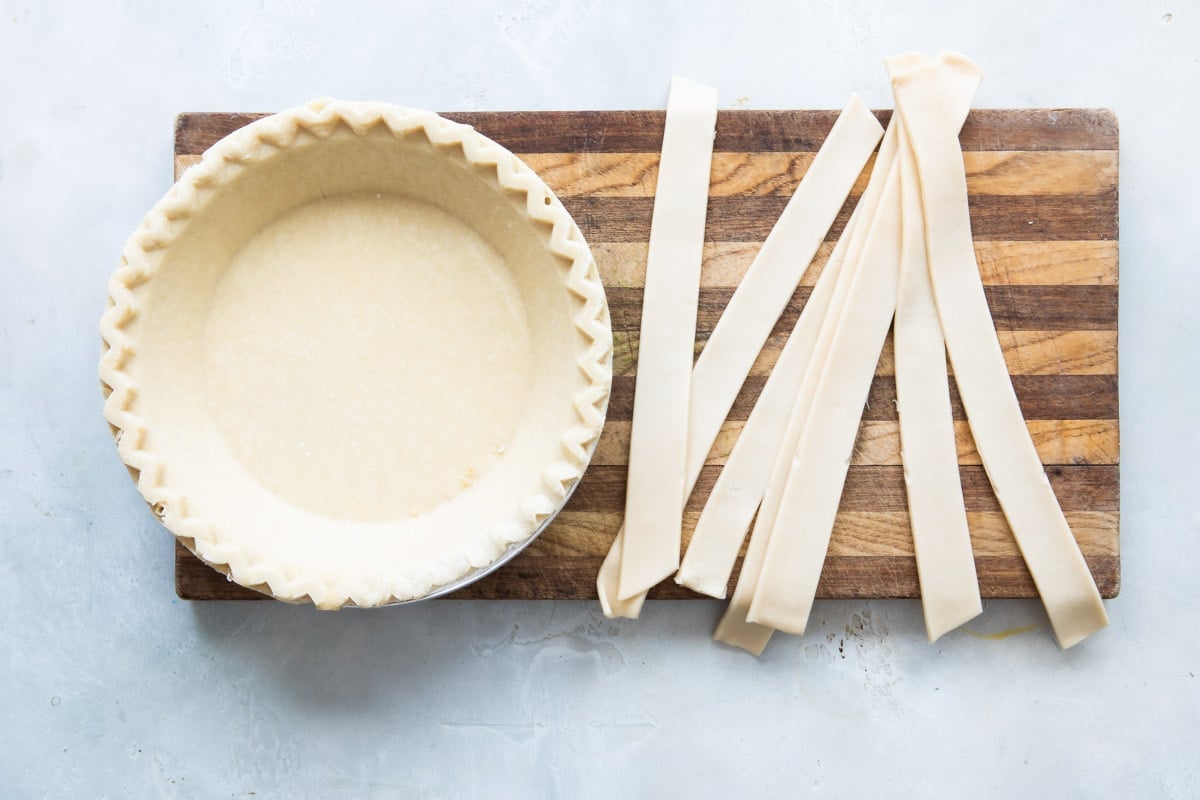
- Lay strips on filled pie at 1-inch intervals. Fold back alternate strips as you weave cross strips. Trim lattice even with outer rim of pie plate; fold lower crust over strips, Seal; flute edges.
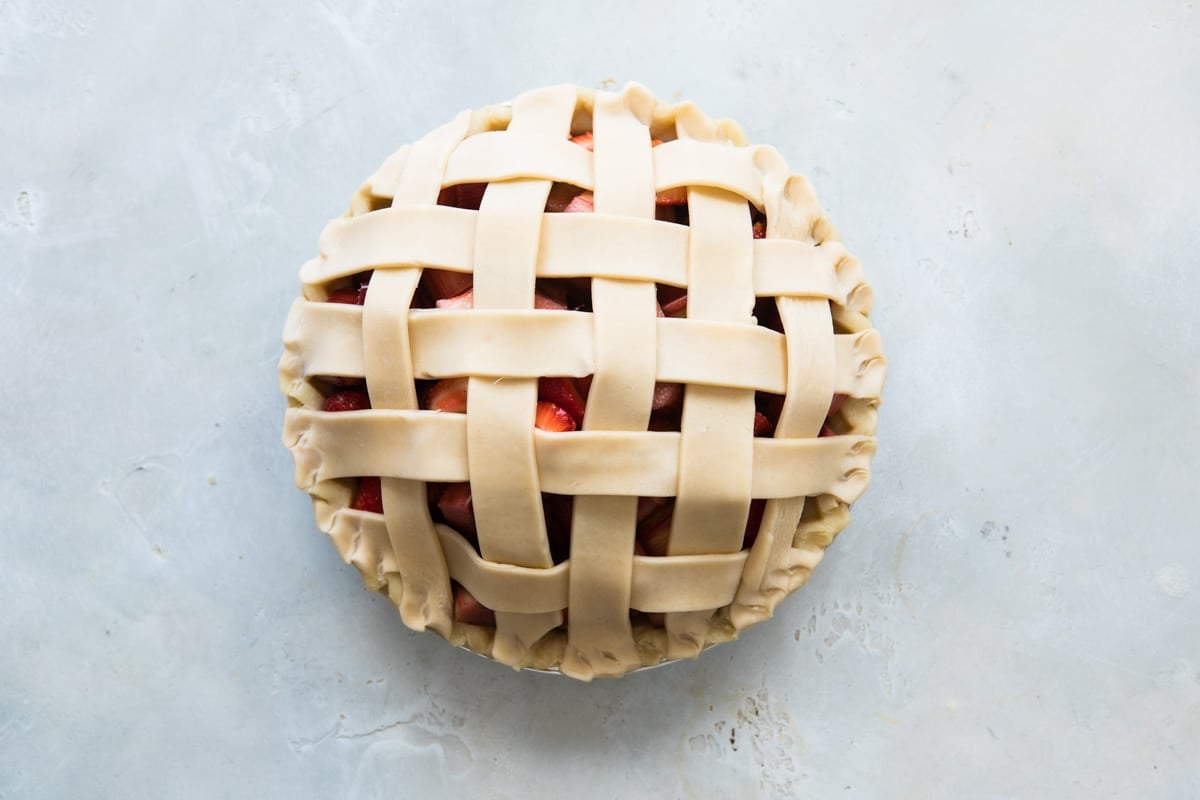
- Bake until golden brown.
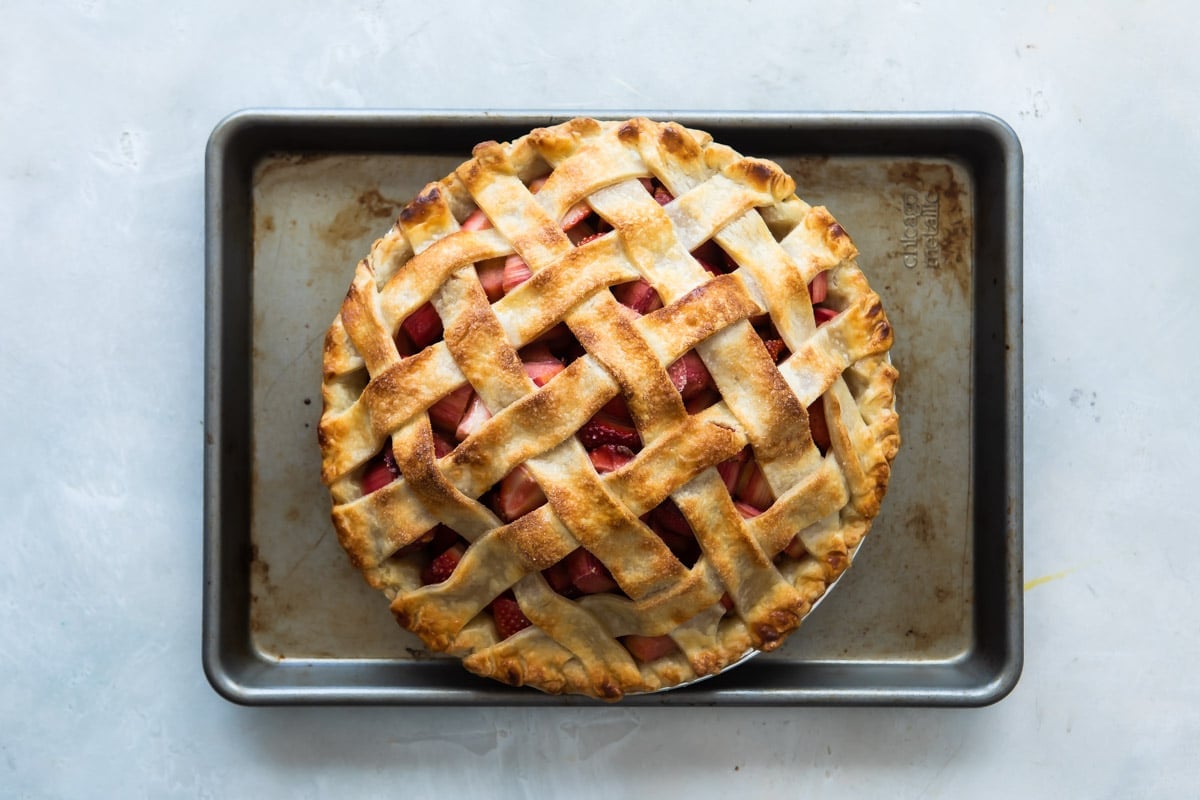
To bake a double crust pie:
- Lay one pie crust in bottom of 9-inch pie pan, trimming away excess dough from the edge of the pan. Spoon in pie filling.
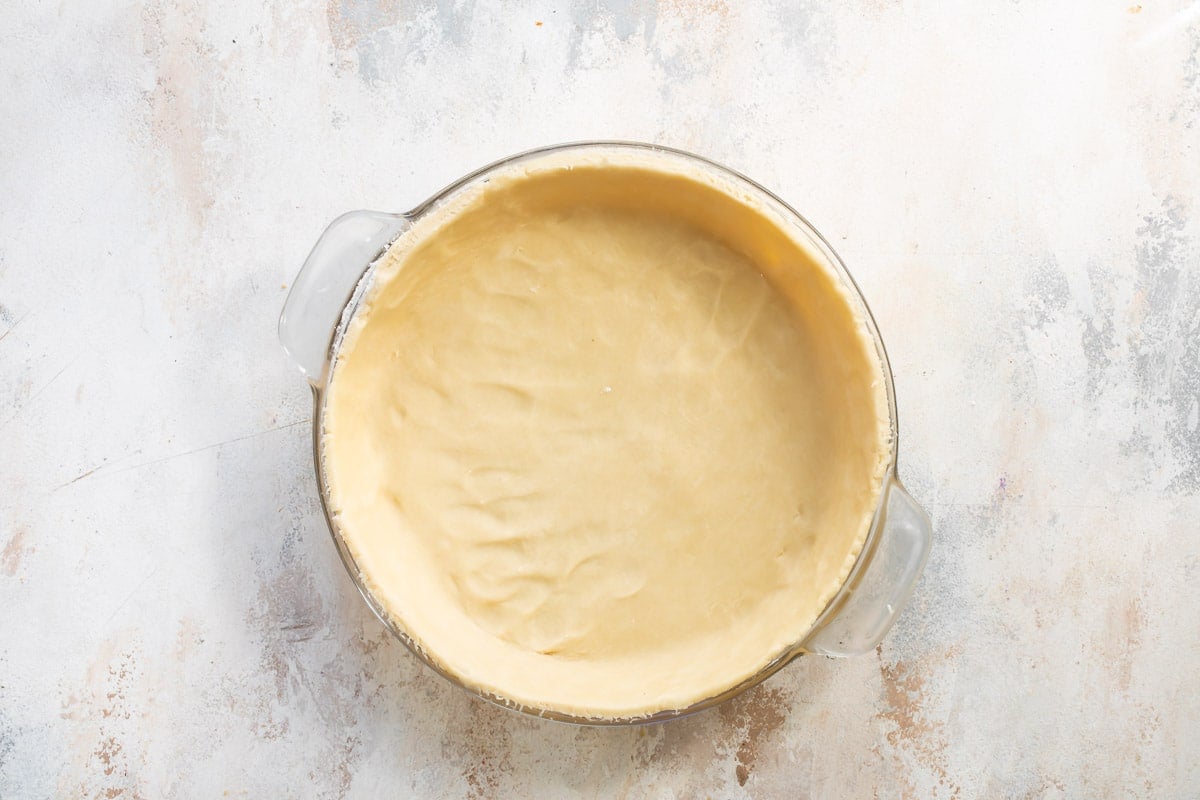
- Cut slits in top crust. Lift pastry by rolling it over rolling pin; then unroll loosely over well-filled pie. Trim ½ inch beyond edge. Tuck top crust under edge of lower crust. Flute edge of pastry as desired.
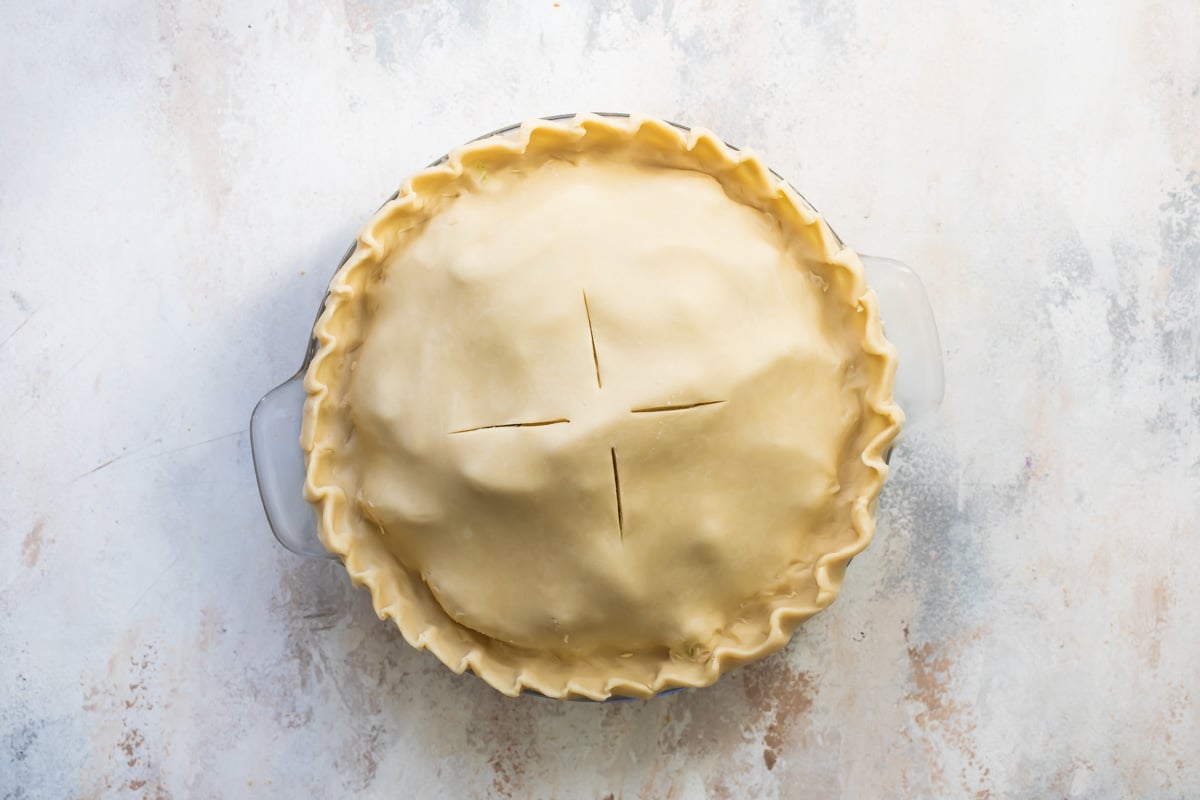
- Bake until golden brown.
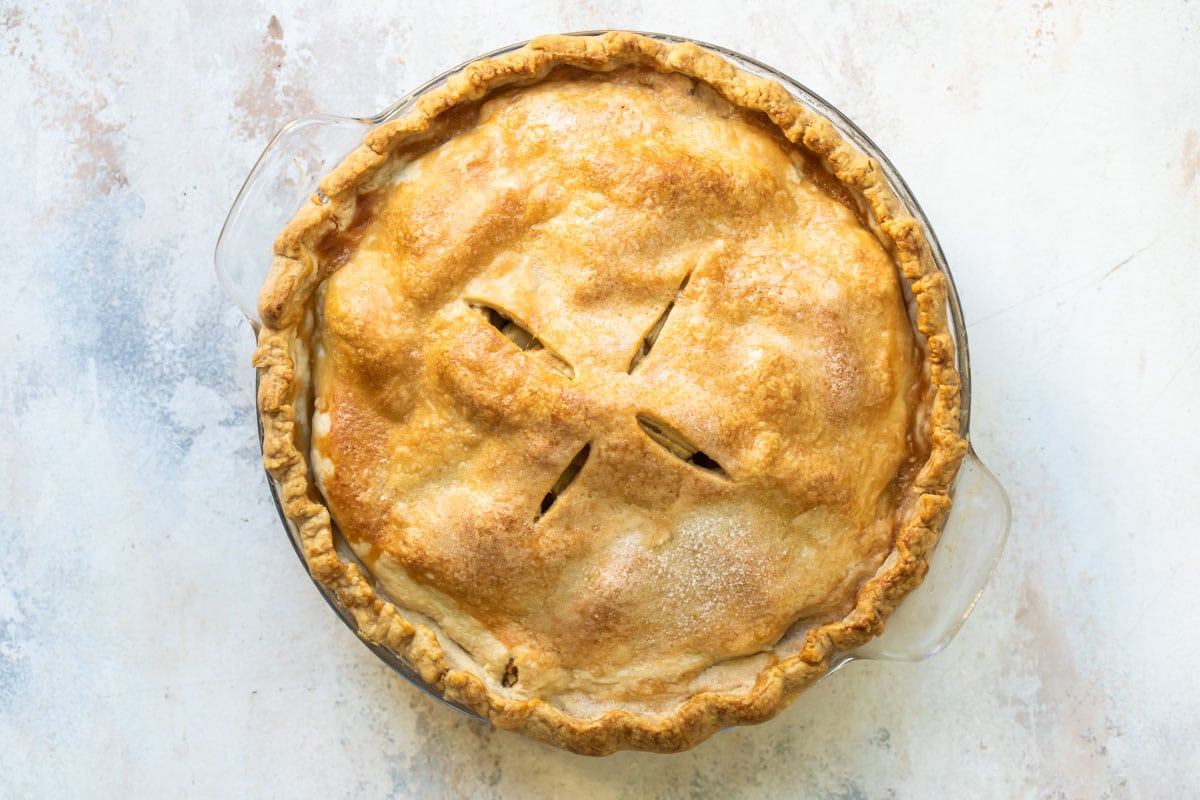
Recipe tips and variations
- Yield: This homemade pie crust recipe makes enough dough for two single crust for an 8-inch, 9-inch, or 10-inch pie; one 8-inch, 9-inch, or 10-inch double-crust, lattice top pie; or one large galette.
- Storage: Form pie crust into a disc, wrap in plastic wrap, and store in the fridge for up to 3 days.
- Freezer: The best way to freeze pie dough requires a little more advanced prep, but it will pay off later. Transfer the pie crust to a freezer-safe pie pan (aluminum works well), slicing off any excess and crimping if desired. Wrap the pan of unbaked pie crust tightly with waxed paper or plastic wrap and/or transfer it to a large zip-top freezer bag and seal tightly. As long as the dough is already rolled out and in a pan, there’s no need to thaw the unbaked crust; you can bake it right out of the freezer. For best results, use the frozen pie crust within 3 months. You can also freeze plastic wrap-coated balls of pie dough. If you go that route, thaw the dough in the refrigerator overnight so you can roll it out and proceed with your pie recipe.
- Savory pies: Some of the best pies have no fruit or sugar in sight. Dive into a hearty Chicken Pot Pie, Turkey Pot Pie, or my 100% vegan Vegetable Pot Pie made with puff pastry.
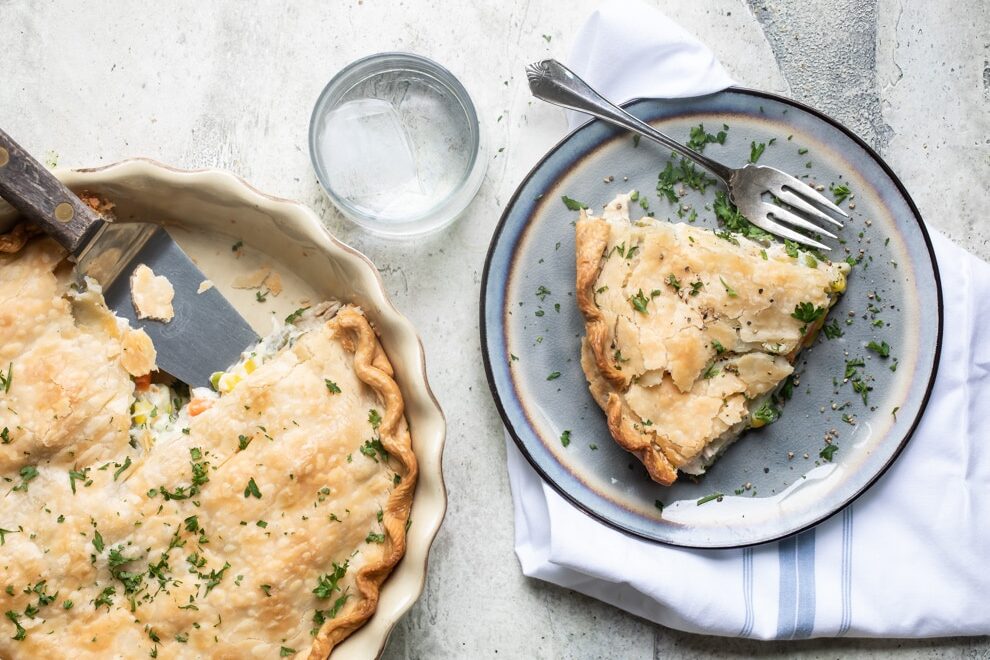
Frequently Asked Questions
If you don’t own (or simply don’t want to dirty) a food processor, a handheld pastry cutter (aka pastry blender) can help make quick work of cutting the shortening into the flour. If you don’t own one and don’t want to buy another kitchen tool, you can also use a large fork to tackle the task. Use clean hands as a last resort; your body temperature will warm the shortening, and it’s easy to overwork the dough, causing more gluten to develop. The end result: a tougher finished product.
Some pie recipes require you to partially or fully bake a pie crust or tart crust before adding a filling. This is very common when the filling itself goes in unbaked such as with cream pies. To blind-bake a crust, prick the bottom of it to prevent rising, line the crust with foil or parchment paper, and fill the lined crust with pie weights or dried beans (you cannot eat the beans after using them for blind baking). Bake the crust according to your recipe instructions.
Brush on an egg wash (whole egg, yolk, or white and water, milk, or cream) to seal edges or add shine and color to baked goods. There are several combinations depending on your desired results, and you can learn about all of them in my post about Egg Wash.
If the top circle of crust appears to be browning too quickly, fold strip of foil around rim of crust to cover the fluted edge. Or slide on an adjustable pie crust shield. Both methods will help protect it from the high heat required to cook the bottom of the pie crust.
It’s tempting to make pie crust with unsalted butter, since butter packs some rich dairy flavor, compared to the neutral qualities of shortening. All-butter or half-butter pie crusts are definitely possible. (You can also use lard.) However, since cold butter has a lower melting point than shortening, butter pie crusts need to be handled with more TLC and can become fragile if at any point the dough gets too warm. Butter crusts can also be challenging to work with if they get too cold. For these reasons, I swear by an all-shortening pie crust recipe, but feel free to choose your own adventure.
Dough is easier to roll out when it’s quite cold, but not frozen, since it will stick less and be firm enough to handle. After mixing the pie crust recipe and forming it into two balls, wrap each in plastic wrap and chill for at least 30 minutes in the refrigerator. Unwrap each piece of dough and either roll them out between two pieces of parchment lightly dusted with flour (so you can easily spin, maneuver, and transfer the crust to the pan) or on a lightly dusted clean kitchen counter.
More pies to try
Pie and Tart Recipes
Pumpkin Pie Recipe
Pie and Tart Recipes
The Best Apple Pie Recipe
Pie and Tart Recipes
Pecan Pie
Pie and Tart Recipes
Strawberry Rhubarb Pie
Join Us
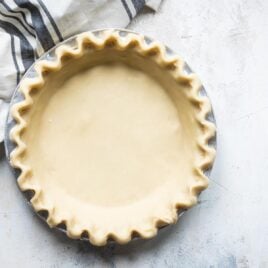
How to Make a Pie Crust
Ingredients
- 2 cups all-purpose flour sifted
- 1 teaspoon Salt
- 2/3 cup shortening (see note 1)
- 5-7 tablespoons cold water (see note 2)
Instructions
To make the pie crust:
- Preheat oven to 450 degrees. Sift the flour and salt together into the bowl of a food processor; add shortening and pulse until pieces are the size of small peas.
- Sprinkle 1 tablespoon of the cold water over part of the mixture. Pulse again. Repeat until all the mixture is moistened and just holds together when pressed with fingertips. Divide and form into two balls.
- Flatten one ball onto a lightly floured surface by pressing with palm of hand three times across in both directions. Roll from center to edge until 1/8-inch thick.
To bake a single pie crust:
- Fit pastry into pie plate; trim ½ to 1-inch beyond edge; fold under and flute edge by pressing dough with forefinger against wedge made of finger and thumb of other hand.
- Prick bottom and sides well with fork. (If filling and crust are baked together, do not prick crust.) Bake until golden brown, about 10 to 12 minutes.
To bake a lattice-top pie:
- Trim lower crust ½ inch beyond edge of pie plate. Roll remaining dough 1/8-inch thick. Cut strips of pastry ½ to 3/4-inch wide with pastry wheel or knife.
- Lay strips on filled pie at 1-inch intervals. Fold back alternate strips as you weave cross strips. Trim lattice even with outer rim of pie plate; fold lower crust over strips, Seal; flute edges.
To bake a double-crust pie:
- Lay one pie crust in bottom of 9-inch pie pan, trimming away excess dough from the edge of the pan. Fill with pie filling.
- Cut slits in top crust. Lift pastry by rolling it over rolling pin; then unroll loosely over well-filled pie. Trim ½ inch beyond edge. Tuck top crust under edge of lower crust. Flute edge of pastry as desired.
Recipe Video
Notes
- Shortening: Technically, shortening is any fat that is solid at room temperature and used in baking. Dough is considered “short” if it is more crumbly, mealy, or flaky. Historically, shortening was more a class of ingredients (lard, butter, margarine) than a specific ingredient. When vegetable shortening, such as Crisco, rose in popularity during the 1920s to 1950s as a shelf-stable alternative to butter, this became known colloquially as “shortening.” To this day, vegetable shortening makes very flaky pie crust that’s fairly easy to work with (due to its melting point that’s higher than butter).
- Cold water: Start with ice cold water. The colder the ingredients are, the less risk there will be for the shortening to melt or become overworked, which can lead to a tougher pie crust. Since you only need 5 to 7 tablespoons of water and use it 1 tablespoon at a time, I suggest filling a liquid measuring cup with ice and water. Use a tablespoon to scoop out water, steering clear of the ice.
- Yield: This homemade pie crust recipe makes enough dough for two single crust for an 8-inch, 9-inch, or 10-inch pie; one 8-inch, 9-inch, or 10-inch double-crust, lattice top pie; or one large galette.
- Storage: Form pie crust into a disc, wrap in plastic wrap, and refrigerate for up to 3 days.
Nutrition
Meggan Hill is a classically-trained chef and professional writer. Her meticulously-tested recipes and detailed tutorials bring confidence and success to home cooks everywhere. Meggan has been featured on NPR, HuffPost, FoxNews, LA Times, and more.
